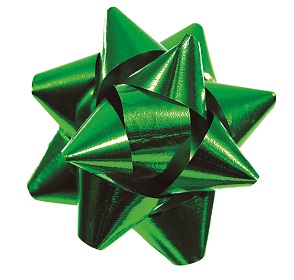Ho ho ho. It’s the last few days of school before the Christmas holidays and your pupils are all far too excited to concentrate on anything other than the looming visit by the big man in red – and the possibility of making snowmen.
So how do you keep their minds engaged on the subject, yet tie it in with the seasonally influenced lack of concentration in class?
We’ve come up with a range of websites and activities that should come in useful to provide stimulation, enrichment and entertainment before the school holidays, whilst retaining a modicum of scientific learning.
We’d also welcome your comments to share other resources or activities that you have used or found useful.
12 ideas for a scientific Christmas class
Christmas tree buzzer game
A great idea to get students to use what they know about electrical currents from Snapshot Science. Pupils use the templates and materials to build a fun game. It’s showing its age with the requirement of a film canister (this may spark a discussion as to what one of these is!), an alternative may be a small yoghurt or cream pot.
The Holly Leaf Miner investigation
The Holly Leaf Miner investigation. The British Ecological Society has a number of investigations in this fieldwork booklet, page 40 outlines Ilkley Grammar School’s investigation into the Holly Leaf Miner. An interesting way to get the class outside in the school grounds.
Christmas lights parallel and series circuits
Why do the lights of a Christmas tree not work if one of the bulbs is blown? Use this question as a great way to demonstrate practical electricity in real terms… and maybe get all your Christmas lights sorted to go up on the tree! The pupils could be encouraged to bring in their own faulty Christmas lights to fix and test? Another way of demonstrating how science affects us in all sorts of real life activities.
Hold the front page
A fun scientific history lesson here, to help understand the progression of scientific endeavours through a calendar of The Sun’s front pages. Inspiration courtesy of our own Lynne Cooper and The Sun.
Firstly produce a list of selected front pages (12?) without dates from the website .
- Get the pupils to put the front pages into possible date order, earliest first.
- Then group the pages (into threes) and split the pupils into teams to find out more about their front page/pages either from the site or other websites.
- Pupils are then asked to Post-it note the date order for the front pages as a class. Or do something brilliant on your interactive white board so kids can move around the front pages.
- In true 12 day of Christmas fashion get the teams to give a one minute jingle (including everyone in the team) singing back information on the front page that they have been researching! In date order of course!
Can be as long or as short as required there are 60 front pages on the site all have more information and some have video clips and of course that are put into date order!
Make your own real snow
With predictions of a white Christmas receding for this winter here is an opportunity to turn this around and make your own real snow. This page also has some interesting notes about how ski resorts plan and make their own snow, so a good opportunity to relate science to a real world application.
Christmas chromatography – deck the halls
Explore chromatography with your students by making a string of “light bulbs!” Students cut light bulb shapes out of coffee filters or filter paper and use water-soluble markers, pipe cleaners, and water to create a colorful display.
Just one Father Christmas?
Who are Father Christmas’s ancestors? Are all British Mr Christmases descended from one ‘Father’ Christmas? After finding out how researchers plan to use DNA fingerprinting to discover the answer to this question, students play ‘Call my bluff’ or sort true/false cards to reinforce their understanding of inheritance.
Santa’s sleigh race
A second offering from Snapshot Science is Santa’s Sleigh Race, which involves making a racing sleigh and then having a race. The science in the race is to test whose sleigh travels the furthest and then use force diagrams to explain why the sleigh moves.
Track Santa
In past years Norad (North American Aerospace Defense Command ) have tracked Santa Claus , a tradition started in 1955 after a Sears Roebuck & Co. advertisement for children to call Santa misprinted the telephone number and put them through to the Commander-in-Chief’s operations “hotline.” It is now possible to follow it on Google earth and Google maps.
Reindeer quiz
Here is an easy quiz to help develop knowledge and understanding of reindeer (as recently starred on David Attenborough’s Frozen Planet series). Some quick facts can be found here to help answer the quiz questions.
How to cook the perfect turkey
Another example from the very good UPD8 website. This time looking at a combination of chemistry (the chemical reaction of cooking meat) and physics (heat transferral) using the cooking of a turkey.
Will Santa make it?
Santa is planning ahead for when humans colonise the rest of the Solar System – he may decide to move to another planet! In this fun activity pupils analyse planetary data to find which planet best satisfies Santa’s future requirements.
They then e-mail Santa to advise him of their decision and – if you wish – design a Christmas card to show why this planet is such a great place to spend Christmas.
We hope that some of these ideas prove useful in the run up to Christmas. You may also be interested in our collection of Christmas experiments on iTunes U. This link will open iTunes to enable you to see it.
